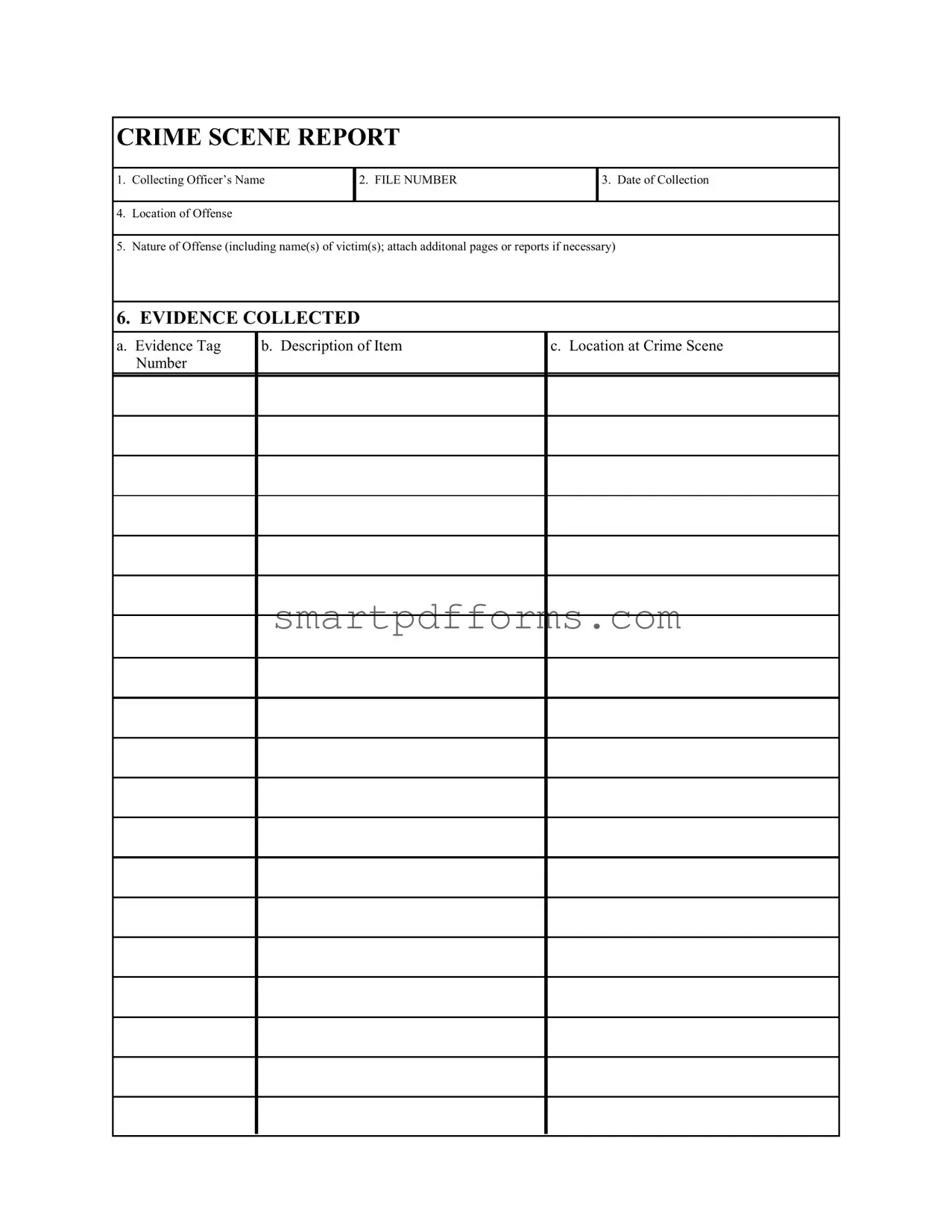In the meticulous world of law enforcement and crime scene investigation, the Crime Scene Report form stands as a crucial document, ensuring a structured and comprehensive record of the scene where an offense occurred. This form serves multiple purposes, from guiding the collecting officer through the detailed process of evidence gathering to providing a permanent record that can be referred back to in the course of a criminal investigation or trial. At the heart of the form are key sections that include the collecting officer's name, a unique file number for the case, the date when the evidence was collected, and the specific location of the offense, which collectively set the foundation for the investigation. Moreover, the nature of the offense, alongside the names of any victims, is comprehensively documented, with the provision to attach additional pages or reports if the complexity of the case requires it. A critical segment is dedicated to cataloging the evidence collected at the scene, where each item is meticulously recorded with an evidence tag number, a description, and the exact location it was found within the crime scene. This methodical approach not only aids in preserving the integrity of the investigation but also plays a pivotal role in the justice process, supporting the pursuit of truth and accountability.

